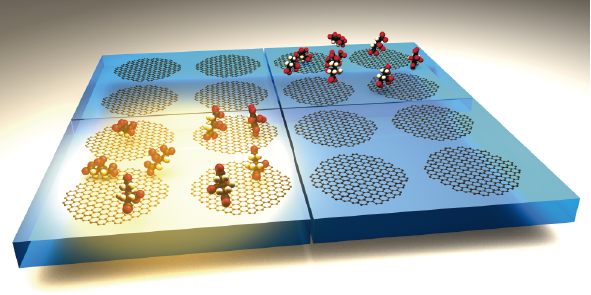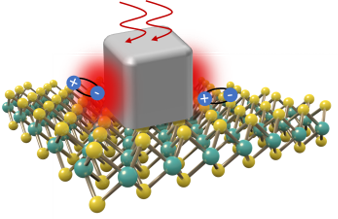Electrical Nanostructures Nano-Plasmonic (Surface Plasmon) PhD in Nano-Microelectronics
Researcher and author: Dr. ( Afshin Rashid)
Note: In localized superficial plasmons, the basis of interactions is nanoparticles, which have been studied for their properties in stimulating this mode of plasmonic waves. In surface plasmon polaritons, with the introduction of their working foundation, there is its field formulation and how these structures exceed the diffraction limit.
Surface nanoplasmon resonance is a phenomenon that occurs when polarized light strikes a metal layer at the interface of the environment with different refractive indexes. The mass oscillation techniques excite and detect free electrons (known as surface nanoplasmons) through configuration, in which light is focused on a metal film through a glass prism and the next reflection is detected. . The interaction of nanoplasmonic electrical nanostructures (surface plasmon) with electromagnetic radiation is largely dictated by their free conduction electrons. Free electrons oscillate 180 degrees out of phase relative to the electric field of the exciter. As a result, most metals have a negative dielectric constant at optical frequencies, which results in very high reflectance, for example. In addition, at optical frequencies, the free electron gas of the metal can maintain surface and volumetric charge density fluctuations, called nanoplasms, with distinct resonant frequencies. The presence of plasmons characterizes the interaction of metal nanostructures with light at optical frequencies. Similar behavior cannot be simply reproduced in other spectral ranges using no Maxwell scale resizing.
In the structure of nanoplasmonic electrical structures (surface plasmon) since the parameters of the material change significantly with frequency. In particular, this means that model experiments with, for example, microwaves and larger metal structures cannot replace experiments with metal nanostructures at optical frequencies. Fluctuations in surface charge density associated with surface nanoplasmons at the interface between a metal and a dielectric can cause sharply increased near-light fields that are spatially enclosed near the metal surface. Similarly, if the electron gas is enclosed in three dimensions, such as a small particle, the general displacement of the electrons relative to the positively charged lattice results in a repulsive force, which in turn creates a specific particle-plasmon. Resonance depending on the geometry of the particle. In well-shaped particles (usually sharp), local charge accumulation associated with sharply increased light fields can occur. Changes in some properties, such as conductivity in nanotransistors and electromagnetic properties in nanowires, may occur in dimensions of only a few nanometers. Resonance of surface plasmons in nanometer-sized structures is called localized surface plasmon resonance.
Conclusion :
In superficial superficial plasmons, the basis of the interactions is nanoparticles, the properties of which have been studied to stimulate this mode of plasmonic waves. In surface plasmon polaritons, with the introduction of their working foundation, there is its field formulation and how these structures exceed the diffraction limit.
Researcher and author: Dr. ( Afshin Rashid)
PhD in Nano-Microelectronics




